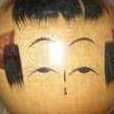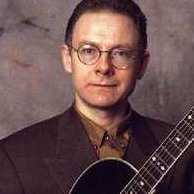Najbolji članovi
Popularan sadržaj
Showing content with the highest reputation on 02/12/23 u svim oblastima
-
Malo sam slusao muziku, nedelja popodne... Skontah da se mi, DIY-eri nikada necemo "smiriti" pa se nas hi-fi, sto milom, sto nemilom, menja... Nekada sam koristio Open Baffle, sa Visaton B200 fullrangerima i Beta 15 basom. Biampovano bese, sa Pass F2 (lite) pojacalom za fullrange i Sony TA-N pojacalom za basove. Medjutim, promenom prebivalista 2019-te, reset. Opet sve ispocetka. I eto, malo po malo, skockah nesto da lici na nesto. Zbog ostalih zivotnih prioriteta hifa je bila na dnu. Ipak, eto, postigao sam neki ok zvuk, a da sve (jos uvek) ne kosta bubgreg i po... Dakle, prvo, pojacalo: Da bude jeftino, a dovoljno dobro: Pass MoFo. Napravio sam dva monobloka, sa 19v napajanjem. Pretpojacalo: Jfet Boz sa J310. Probao sam napraviti i par ostalih varijanti (sipijeve mju-mosfet kao trioda varijsnte), ali sam se ipak vracao na Jfet Boz. U planu je upgrade na Neletov "frontend 2022"... Izvor zvuka/DAC: Za sada jedino SMSL B1. Izvor "Tidal". U planu upgrade, a kakav, jos ne znam. U temi o DAC ovima se osecam ko Alisa u zemlji cuda... Zvucnici: Fullrange/WAW Fullrange je Alpair 10.3. Sasvim lepo svira, u "Technics" kutijama. Namestio sam preklopnik, tako da moze svirati sam, kao fullrange, ili preko hi-pass prvog reda, na nekih 380 Hz, a basovi dole. A "dole" su modifikovane JBL XE-4 kutije, kojima sam rascupao skretnicu, pa im koristim samo bassove, sa skretnicom prvog reda, na 380Hz, i nekim kineskim pojcalcem, kojeg sam dobio neispravnog za dz, popravio i svira kao biamp za bass. Bice zamenjen necim boljim verovatno, ali zasad svira... Idealno bi bilo da koristim samo Alpair 10.3 fullrange u MLTL ili u nekim hornama, ali posto nisam u mogucnosti praviti kutije, zasad ostaje ovako... Da li moze bolje? Moze.11 poena
-
Gospodine @zika izuzetno cenimo vaše prosvetiteljske napore! Svi linkovani tekstovi su izuzetno zanimljivi i bacaju novo svetlo na naše neuke copypaste komande i klikove na misteriozne čekbokseve. Ali avaj, za praktičnu primenu pročitanog trebalo bi krenuti od temelja, a vremena koje je potrebno za to nažalost imamo malo. Dodatno, sede glave nisu tako gipkih moždanih vijuga kao nekada. Iza Vas stoji višedecenijsko iskustvo, a iza nas, uz svu radoznalost, ipak pretežno želja da uživamo u muzici. Jako cenimo Vaše mišljenje, pa me interesuje da li imate neke konkretne primedbe na do sada opisani postupak tvikovanja SnakeOil-a, tj. da li je nešto pogrešno? Takođe, da li imate neki konkretan savet, u vidu konkretnih komandi, kako nešto još dodatno unapredti? Tipa: CPU#0 nam je zadužen za Squeezelite plejer, pa možda ne bi bilo loše individualno podesiti tick za njega? Izvinjavam se unapred ako lupam! Da li ima smisla davanje realtime prioriteta USB-u, kao što sam pokušao u prethodnom primeru, ili to u stvari može da šteti? Pitam, zato što sam davanjem rt prioriteta Squeezelite plejeru dobio seckanje zvuka. ...Sa USB-om deluje da je sve u redu, a čini mi se (čini!) da je zvuk bolji. A možda nije! Itd, itd!4 poena
-

PC kao izvor zvuka - tema MK II
LightMatic i 3 drugih je reagovao/la na Mikorist za temu
OSNOISE Tracer — The Linux Kernel documentation WWW.KERNEL.ORG https://bristot.me/files/research/papers/osnoise/osnoise.pdf4 poena -
Još samo da krenu da prave DAC onaj i Zen će da nas banuje sve3 poena
-
Gledam dva puta u nick, mislim Mikum napisao, kad ono..3 poena
-
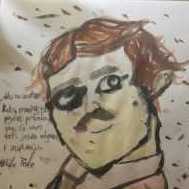
Vix-ov skromno sirotinjski fi-fi sistem tj. Zavrzlame...
black coffe i 2 drugih je reagovao/la na zerowaf za temu
Put!!! Put se računa! Kad se dođe do cilja uživamo u sjećanju na put. Cilj postane nevažan čim se dosegne. 😊3 poena -

Nešto (crno?) za ispod televizora?
aaa zmaju! i 2 drugih je reagovao/la na zeljko_v za temu
Da ne ostane da je sva ov moja halabuka bila lajanje na zvijezde, evo raspleta situacije. Iz toplog Mostara kurir donese kutiju, a u kutiji gorepomenuti harman kardon HK 3490. I još sam ostao dužan dva piva kolegi. :-D Sve super, postavljen je ispod televizora. (naravno, poskidao sam i servisnu dokumentaciju, da vidim sa čim ću se družiti) Eh, sad... ovaj uređaj NIJE spojen na zvučnike. Tako da... Vjerovatno otvaram novu temu, pa da vidimo....3 poena -
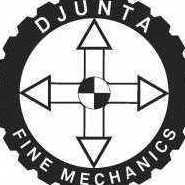
PC kao izvor zvuka - tema MK II
LightMatic i 2 drugih je reagovao/la na Lemić za temu
Kako li je meni tek neukom, kad Kuja sam sebe smatra takvim. Nema druge do da neko sažme na kraju sve u jedan post sa osnovnim postavkama, a da duduk kao ja spremim džabanu, jelo i pilo i da zovem u radne goste.3 poena -
3 poena
-
Zaboravih da li sam stavljao, ako jesam, obrišite: Debian -- Package Search Results -- linux-image-rt-amd64 PACKAGES.DEBIAN.ORG kernel/git/rt/linux-rt-devel.git - The current development -RT tree GIT.KERNEL.ORG Svi pokušaji podešavanja rt su (pomalo) in vain ako nije prisutno jezgro koje to podržava... U;ini'e Vam se da je sve OK, jedino, pravi, rt kernel pokaže da li ste preterali i slično. Podešavke za priority i memlock su u: /etc/security/limits.conf.d/ a Ne odgovaram, ikako, za, ikakve, posledice... Been burnt, not once...3 poena
-
2 poena
-

PC kao izvor zvuka - tema MK II
LightMatic i jedan drugi je reagovao/la na Srecko za temu
Da, ali u mojim godinama je potpuno u redu da čovek odlepi, no Vi ste još mladi za tako nešto2 poena -

Zanimljive, smešne i čudne fotografije
black coffe i jedan drugi je reagovao/la na zerowaf za temu
Zamišljam rabadžiju kako izviruje iz kabine sa slomljenom cigarom u ustima i vikne babi i djedu koji sjede dolje u foteljama prekriveni prašinom: "Za Bugojno?" Djed kaže mrtav ladan, naviko jbg... "Kroz kuhinju ravno i iza kupaonice desno."2 poena -

PC kao izvor zvuka - tema MK II
LightMatic i jedan drugi je reagovao/la na Srecko za temu
Ne brinite, biće i to, samo da steknemo neko iskustvo da bismo mogli da imamo stav naravno uz pretpostavku da sam npr. ja dovoljno kredibilan da biste moje iskustvo mogli da implementirate kod sebe. Pa Vi ste tolikima pomogli, po zakonu o održanju energije, mora da počne i da Vam se vraća.2 poena -

AD1865 / AD1862 / PCM63P NOS USB DAC (blast from the past)
LightMatic i jedan drugi je reagovao/la na Brijac za temu
Jbg, marketing na kraju dana prodaje uredjaje za masu. Lepe reci, slikovita pozadina, saptanje na uvo kupcu Mi to posmatramo iz previse licnog ugla. Malo smo odtabali od komercijale i ne gledamo vise na to ocima slabo obavestenog kupca2 poena -

PC kao izvor zvuka - tema MK II
Lemić i jedan drugi je reagovao/la na Kuja za temu
Uz pomoć plugin-ova navodno je moguće kontrolisati MPD plejer preko LMS-a, tako da se može ostati u poznatom i komfornom okruženju. Ja lično nisam probao, uputstvo postoji u Wiki-ju na SnakeOil sajtu. Kucam sa tableta na kojem nemam sačuvan link, tako da morate sačekati.2 poena -

AD1865 / AD1862 / PCM63P NOS USB DAC (blast from the past)
LightMatic i jedan drugi je reagovao/la na vladd za temu
To je manje bitno u sustini. Bitno je izbeci bahanalisanje i preterivanje, a narocito u pogresno smeru. Audiofilsko pijenje vina bi bilo, odabere se dobro vino, dobre godine, prospe trecina iz flase, popije jedna casa iz te "sredine" a ostalo baci. Sant regulator radi kao varijabilni blider, dobro uradjeni regulatori u opsegu upotrebe ne bi trebalo da imaju nikakve razlike, ali...lose opcije na random pozicijama mogu da pokazu razlike koje se pripisuju fenotipu regulatora. Pride je mana ako je jeftino ili masprodukovano. Zasto ruski audiofanovi ne bi koristili germanijum kada mu je marketing odredjen, makar i nenamenski. To su uglavnom precizni i nezni tranzistori, nisu za tezacki rad, ali...moda obavezuje. Na kraju stizemo do jedine univerzzalne formule da sve treba da je na svom mestu, u svojoj nameni i opsegu, uskladjeno sa sledecim stepenom lanca... A ne isprazni word dropping. Problem je sto ce se efekat hajpa izgubiti, a onda sledi kontrabatiranje efekata, kada cujes sant ili germanijum, povracka pre i konacno, nego davanje prilike sklopu ili komponenti da uradi svoj posao.2 poena -
AD1865 / AD1862 / PCM63P NOS USB DAC (blast from the past)
gluv_i_udaren i jedan drugi je reagovao/la na VukJov za temu
Неке промене могу да се чују за пет секунди ако су довољно драматичне, другима треба гатање од пар недеља.. Конкретно када сам забо неки фенси бурсон, мислим вивид, моментално ми се повраћало од шећера..2 poena -

AD1865 / AD1862 / PCM63P NOS USB DAC (blast from the past)
vladd i jedan drugi je reagovao/la na Zen Mod za temu
@Mikorist pa naravno da nema kraja ....... msm, kraj je tamo gde si zadovoljan , a to nema veze sa kvalitetom sprava nego sa glavom ja se uvek setim primera onog tipa sa kofer gramofonom ispod jedne miske i 10 ploca ispod druge, rano jutro na trgu u NS to da sebe setim i podsetim sta je najvaznije to da li cu ja uzivati u muzici nema nikakve veze sa najboljim komponentama na svetu, a jos manje sa tim da li komsija ima bolje sprave od mene zato, msm da se ne zaboravi - PCM1702 rulez, svve to vase ostalo su igracke2 poena -

AD1865 / AD1862 / PCM63P NOS USB DAC (blast from the past)
LightMatic i jedan drugi je reagovao/la na Mikorist za temu
Pa to je to. Ovo sve što mi upoređujemo ne da je dobro - nego je odlično - ali oče čovek još bolje. DDDAC vs PCM63P. I to samo promenom otpornika. E pa kako će za 5 minuta to da oceni - to mi nije jasno. Ja to ne mogu. Ispada da ako promeni otpornike na DDDAC da će onda on bolje da svira. Ali ako i ja donesem moj PC pa slušamo - još će bolje da svira moj. Mora da promeni onda PC. A ako promeni ribone još bolje. Ako ubaci fotelju još za nijansu. Pa ako promeni parket u dnevnoj sobi...pa cipelarnik u predsoblju. Nema kraja2 poena -

AD1865 / AD1862 / PCM63P NOS USB DAC (blast from the past)
Brijac i jedan drugi je reagovao/la na Zen Mod za temu
samo malo pojasnjenje cujem ja odmah ako se meni nesto ne svidja ...... ajd recimo - kad nije dobro, ili dovoljno dobro a ako je dobro, onda sam skontao da ja bez 2 nedelje ne mogu da ocenim koliko je i kako je dobro2 poena -

AD1865 / AD1862 / PCM63P NOS USB DAC (blast from the past)
LightMatic i jedan drugi je reagovao/la na Mikorist za temu
Pa i da hoće da ofarba zvuk sa nekim ruskim otpornikom - mora da čeka tri dana. Ne može kao na traci da menja otpornike i čuje razliku. Isto važi za bilo koji deo u bilo kojoj spravi. I u zvučniku takođe. Možda je vanzemaljac pa ima drugačije sinapse. I sarma je bolja kad odstoji dva dana pa se podgreje. Prvi dan i nije nešto direkt iz vreloga lonca2 poena -
2 poena
-

PC kao izvor zvuka - tema MK II
vladd i jedan drugi je reagovao/la na Kuja za temu
Ovaj link već ima smisla, hvala! Sa Linux Plumbers Conference nisam znao šta/gde/kako da počnem.2 poena -
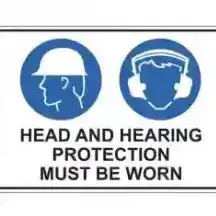
PC kao izvor zvuka - tema MK II
LightMatic je reagovao/la na gluv_i_udaren za temu
Meni je stvar vrlo jednostavna već par sa kompjuterom za muziku: Lenovo Tiny sa linearnim napajanjem i MPD na Snakeoil. Muziku puštam sa NAS-a. Pogašeno šta nije neophodno i to je to. Radi kako treba, ne tražim dalje1 poen -

PC kao izvor zvuka - tema MK II
LightMatic je reagovao/la na Lemić za temu
Pa, slušni utusak je primaran, on pruža zadovoljstvo, nebitno kako će biti okarakterisan, kao subjektivan ili objektivan. Količina detalja, kad ih je više, logički da je bolje, samo napred.1 poen -
Ljudi, MPD player me je naprosto raspametio! Sve je upravo onako kao što autor SnakeOil (AgentKit), a i ogroman broj drugih, kažu. Izuzetna količina detalja (čujete stvari koje niste ni znali da u pesmama postoje), sve je precizno neverovatno, prostor i pozicioniranje instrumenata takvo nikada do sada nisam čuo, a bas brz i precizan do bola, klinički čisto; ma fantastično. Zamerku, koju svi pominju, da je to zvuk koji naprosto imate želju da prikazete drugarima kada kod Vas dođu ali koji ZAMARA, ja nisam u ovih par sati uopšte osetio hvala bogu (nadam se da je to zbog veličine ovih mojih “Harbeth M40.1”-veličine drajvera i naprosto što obožavam filosofiju i zvuk BBC monitora što ovaj Harbeth na neki način i jeste). Već sam siguran da je ovo nešto što se meni ikada najviše dopalo, kao digitalni izvor, a slušam muziku 50 i kusur godina (TO NARAVNO UOPŠTE NE ZNAČI I DA JE DOBRO, naprotiv). Za sada je ipak sve ipak u fazi. Došlo je zadnje vreme kad ja pišem o slušnim utiscima.1 poen
-

Nešto (crno?) za ispod televizora?
zeljko_v je reagovao/la na LightMatic za temu
Nek' vas u zdravlju služi, naravno kad nabaviš zvučnike. Srdačni pozdravi....1 poen -

AD1865 / AD1862 / PCM63P NOS USB DAC (blast from the past)
LightMatic je reagovao/la na Mikorist za temu
1 poen -
Krco predlazem ti da koristeci postojece izlazne trafuljke preskocis EL84 i umesto njih probas neke kvalitetne 6V6 oktalne jace lampe , cak i Ruske 6P3S (6L6) mogle bi da ti se tu lepo uklope , sve to naravno u dobrom PP spoju , oko 20W+ mozes tako da isteras bez da je bilo sta preterano isforsirano.1 poen
-
Vidi ovo , Inox , mislim da kada se taj buseni pleh izbije iz okvira i savijeni krajevi isprave ispadne negde oko recimo 27cm x 17cm , covek prodaje vise komada , a i negde je iz tvog lokala . https://novi.kupujemprodajem.com/gradjevinarstvo/ostalo/inox-ukrasne-resetke/oglas/143238286?filterId=21401078991 poen
-
Igram se sa plejerima, vasceli dan. Još uvek sam na squezeelite (ralph). Pokušavam da čujem i MPD plejere, ali mi to baš ne uspeva. Razlog je što je MPD dokumentacija za server toliko velika da je bolje kako lepo reče g. Lemić da gledam španske serije nego da ulazim u to. Po srpski, bez ikakvog znanja i čitanja (kako je to moguće da se desi članu nebeskog naroda-zajednice) ne uspevam da konfigurisem Android ap “MPdroid” koji je preporuka SnakeOil autora. Doduše ljudi su lepo izbacili poruku u samoj aplikaciji da ko ne zna ništa o MPD ni da ne pokušava, no to verovatno važi za one druge a ne za nas Srbe. Radi se o tome da nikako da pogodim adrese servera i portove i da li treba da popunjavam i neke druge 2 stavke u konfiguracionoj formi koje ne znam ni šta uopšte znače. Da crnjak bude veći na iPhone (MPDplayer ap) sam upisao samo IP adresu mog SnakeOil NUC (toliko sam je puta ovih dana uneo da ću ići u opštinu da promenim ime u brojni format, kad može Musk da da takvo ime sinu što ne bi mogao i ja) i port koji su oni preporučili, i aplikacija je proradila. Tako sam ipak uspeo da čujem kako zvuči MPD, no Android ap sa tim istim podacima ni da čuje-krešuje. Apple:Android 1:0, za sada.1 poen
-

AD1865 / AD1862 / PCM63P NOS USB DAC (blast from the past)
LightMatic je reagovao/la na Zen Mod za temu
dobro, zakopao sam malo po sajtu im, pa je logicno - imaju pricu i prodaju je ceve i to - to mu dodje filozofija, put do zeljenog cilja po pitanju prirode zvuka pa onda ciljna grupa al msm Ge tranzistor u Shunt regu ........ nicim ne moze da se opravda cilj shunt rega je da bude apsolutno idealna konstrukcija ....... a upotrebom manje dobrog elementa samo se udaljavas od idealnog zakljucak1 poen -

Topping D10s ili upgrade starog hifi sistema
LightMatic je reagovao/la na Zen Mod za temu
najjednostavnije i najbrze sa ESS je enable voltage out, i onda direktno sa DAC chipa kond na buffer i napolje malkice pasivne filtracije i to je to cak bi se sve moglo spakovati u sam D10 moze i strujni mod, al to onda zahteva posebno kuciste - ono sto je Mikum radio sa svojim ...... al je napravio gresku u koracima sto je ostao na OP msm, moze da menja OP do besvesti, da manje ili vise umiva, ali i dalje ostaje pri istoj koncepciji i zvucace kao ta koncepcija , sa svim ogranicenjima1 poen -
1 poen
-
1 poen
-
Mogli bi da otvorimo ceo forum samo za *NIX Imam (višak) licencu za forum koju nikad nisam iskoristio. Možda je i bolje....1 poen
-
Сада никада нећемо сазнати да ли је осциловао..1 poen
-
kao concertina phase spliter, EL84 ne moze biti bolja od ECC88. bolja od ECC88 moze biti 6N6P.1 poen
-
1 poen
-
Krco po mom misljenju stampana ploca (PCB) ima smisla da se upotrebi samo kod velikoserijske prizvodnje , recimo najmanje za 1000+ komada lampas pojacala , kod male serije , ili kod unikatnih komada ipak treba ici da se pravi point to point tehnikom , pogotovu gde lampe rade vruce podesene u A klasi , problem kod PCB ploca je kada se vremenom od toplote skroz ugljenisu i pocnu da provode , jedino sto za sada mozes da uradis je da preletujes sve kriticne tacke , pogotovu tacke pinova na postoljima lampi.1 poen
-
/event/16/logo-1363580640.png Linux Plumbers Conference 2022 (12-14 September 2022): CPU isolation tuning through cpuset · Indico LPC.EVENTS 12-14 September, Dublin, Ireland The Linux Plumbers Conference is the premier event for developers working at all levels of the plumbing layer and beyond.1 poen
-
Split je u redu s obzirom na debeli off-topic.1 poen
-
A sada gosn Srećko, još nekoliko tvikova! Za početak sam u NUC BIOS-u isključio sve USB portove sem jednog na koji mi je povezan DAC, i ubio sam sve sto ne koristim a može se ubiti - WiFi, integrisani zvuk, itd, itd. Što se SnakeOIl-a tiče, ako nećete da se bakćete sa (meni nepoznatim) Linux komandama, sve je dostupno iz web interfejsa. Nisu svi tvikovi odmah dostupni, neki od njih biće "otključani" posle donacije autoru, cifra nije bitna. Prvo, probajte različite verzije Squeezelite plejera koje su dostupne, ja sam se odlučio za "Squeezelite (ralph)". Drugo, u zavisnosti od količine raspoloživog RAM-a, u "Music Player" sekciji kreirajte custom RAM buffer za Squeezelite: Ja sam se odlučio za vrednost -b 2097152:2097152 što oduzima 4GB RAM-a. Na ovaj način svaka pesma se za par sekundi u celini učita u RAM, tako da SSD ili mreža potpuno miruju tokom plejbeka. Napomena! Ovo ne radi sa svim verzijama Squeezelit-a, Squeezelite (R2) ignoriše ovu komandu. Treće, u "SnakeOil" sekciji možete probati da se igrate sa Clocksource-om. Po default-u je hpet, ja sam izabrao tsc koji daje nešto čistiji i možda suvlji zvuk: Četvrto, instalirajte cpuset: ...potom dodelite plejeru odvojeno CPU jezgro (ovo, zajedno sa instalacijom cpuset-a, mislim da je dostupno samo posle donacije autoru): Peto, ja sam USB-u dodelio realtime prioritet pošto mi se učinilo da tako bolje svira: ... Prethodno utvrdivši koji mu je irq uz pomoć TOP komande: Dok sam se igrao sa MPD-om u ulozi plejera, bio sam kreirao i RAM disk za privremeni smeštaj fajlova iz plej liste, ali mislim da isti nije neophodan ako se koristi LMS+Squeezelite sa gore opisanim buffer-om. I to bi bilo to!1 poen
-
Sad još samo fali RAAL da dođe ovde na temu1 poen
-
Upravo taj Ranko je moj drugar. Sada zasluzeno odmara na Kanarima i jedri u svom brodu.1 poen
-
Swap na kojem sam ja počinjao. VAX nije bio i na vidiku. Posle Litton-a na Onda na: pa... Na VAX sam stigao udaljeno, preko Svaka alatka je dobra samo onoliko koliko je dobro upotrebljena.1 poen
-
Tako je ! U favoritima mi je taj sajt poodavno. Preporuka !1 poen
-
Svima bih se zahvalio na trošenju vremena i skupljenoj snazi da bi otkucali svoje odgovore u ovoj temi. I hvala (eminentnom!) članu ovog foruma sa svojom ponudom. Kao prvo, izvinjavam se za neizjašnjavanje oko broja kanala. Meni je u principu mnogo draži stereo, nego bilo koji multikanalni način donošenja (muzike?) u moj životni prostor. @Mikorist , hvala na linku, ali - NE. Previše je činčeva iza. @aaa zmaju! Yamaha mi je savjetovana kao prilično muzikalna, i baš A-S serija... Pogledao podatke, sve super, ali... A-S 301 je izvan tog nekog predefinisanog opsega (nova cca 338 jedinica), polovne i nisam nešto gledao... Možda skočim u ovo, vidjećemo... @ManicP Moj nekakav izbor je bio Onkyo TX-8255, ali baš dobih savjet da su se čitave serije kvarile, pa je verovatno to to o čemu si pisao. Tvoj model je (sad vidim) noviji, i opremljen i sa striming mogućnostima, što je definitivno plus. Pogledaću cijene, i mislim da je tu negdje oko 250 eur... Za sada držim oko na njemu., vidjećemo kako će se situacija razvijati. I za kraj, privatnom porukom mi je ponuđen Harman Kardon HK 3490. Gledam i razmatram. Sve mi je nekako draži i draži... Vidjećemo. :-) Još jednom, hvala svima!1 poen
-
i jos....... A-B Test: A test between two components. For example, a test between two different pre-amplifiers. For the test to be scientifically valid the levels should be matched. ABX Comparator: A device that randomly selects between two components being tested. The listener doesn't know which device is being listened to. AC3: See Dolby Digital Acoustic suspension: A sealed or closed box speaker enclosure. ADA Compliant Devices: assistive listening equipment that comply with the Americans With Disabilities Act, Public Law 336 of the 101st Congress, which was enacted July 26, 1990. The act contains requirements for new construction, for alterations or renovations to buildings and facilities, and for improving access to existing facilities of private companies providing goods or services to the public. It also requires that State and local governments provide access to programs offered to the public. The ADA also covers effective communication with people with disabilities, eligibility criteria that may restrict or prevent access, and requires reasonable modifications of policies and practices that may be discriminatory. AES/EBU: Balanced digital connection. For example, used to connect a CD transport to a DAC. The AES/EBU standard uses XLR type connectors. Alignment: A class of enclosure parameters that provides optimum performance for a woofer with a given value of Q. Alpha: Term used in sealed enclosure designs to mean the ratio of Vas to Vb, where Vb is the volume of the box you will build. Alternating Current (AC): An electrical current that periodically changes in magnitude and direction. Ambience: The acoustic characteristics of a space with regard to reverberation. A room with a lot of reverb is said to be "live"; one without much reverb is "dead." Ampere (A): The unit of measurement for electrical current in coulombs per second. There is one ampere in a circuit that has one ohm resistance when one volt is applied to the circuit. See Ohms Law. Amplifier (Amp): A device which increases signal level. Many types of amplifiers are used in audio systems. Amplifiers typically increase voltage, current or both. Amplifier classes: Audio power amplifiers are classified primarily by the design of the output stage. Classification is based on the amount of time the output devices operate during each cycle of signal swing. Also defined in terms of output bias current, (the amount of current flowing in the output devices with no signal). Attenuate: To reduce in level. Analog: Before digital, the way all sound was reproduced. Aperiodic: Refers to a type of bass-cabinet loading. An aperiodic enclosure type usually features a very restrictive, (damped), port. The purpose of this restrictive port is not to extend bass response, but lower the Q of the system and reduce the impedance peak at resonance. Most restrictive ports are heavily stuffed with fiberglass, dacron or foam. Audiophile: A person interested in sound reproduction. AWS: Adaptive Woofer System, trademark of ACI. An active woofer system with built in user adjustable equalization capabilities. Baffle: A surface used to mount a loudspeaker. Balanced: Referring to wiring: Audio signals require two wires. In an unbalanced line the shield is one of those wires. In a balanced line, there are two wires plus the shield. For the system to be balanced requires balanced electronics and usually employs XLR connectors. Balanced lines are less apt to pick up external noise. This is usually not a factor in home audio, but is a factor in professional audio requiring hundreds or even thousands of feet of cabling. Many higher quality home audio cables terminated with RCA jacks are balanced designs using two conductors and a shield instead of one conductor plus shield. Bandwidth: The total frequency range of any system. Usually specified as something like: 20-20,000Hz plus or minus 3 db. Band-pass Enclosure: A multi-chambered ported system. Band-pass filter: An electric circuit designed to pass only middle frequencies. Bass Blockers: Commercial name for auto-sound first order high pass crossovers (non-polarized capacitors), generally used on midbass or dash speakers to keep them from trying to reproduce deep bass. Bass Reflex: A type of loudspeaker that uses a port or duct to augment the low-frequency response. Opinions vary widely over the "best" type of bass cabinet, but much has to do with how well a given design, such as a bass reflex is implemented. Beaming: A tendency of a loudspeaker to concentrate the sound in a narrow path instead of spreading it. Bessel crossover: A type of crossover design characterized by having a linear or maximally flat phase response. Linear phase response results in constant time-delay (all frequencies within the passband are delayed the same amount). Consequently the value of linear phase is it reproduces a near-perfect step response with no overshoot or ringing. The downside of the Bessel is a slow roll-off rate. The same circuit complexity in a Butterworth response rolls off much faster. Bi-amplify: The use of two amplifiers, one for the lows, one for the highs in a speaker system. Could be built into the speaker design or accomplished with the use of external amplifiers and electronic crossovers. Bi-wiring: The use of two pairs of speaker wire from the same amplifier to separate bass and treble inputs on the speaker. Blu-ray Disc: A Blu-ray Disc (also called BD) is a high-density optical disc format for the storage of digital media, including high-definition video. The name Blu-ray Disc™ is derived from the blue-violet laser which, because of its short wavelength (405 nm), allows substantially more data to be stored than a comparably sized DVD. A Blu-ray Disc can store approximately 5X as much data as a DVD which uses a red laser with a wavelength of 650 nm. A benchmark for the purpose of calculating duplication speeds, a Blu-ray Disc™ takes about 45 minutes to burn its 25 GB of data at a 2X speed. On average, a single-layer Blu-ray Disc™ can hold a High Definition feature of 135 minutes using MPEG-2, with room for an additional 2 hours of bonus material in standard definition quality. A dual layer disc will extend this number up to 3 hours in HD quality and 9 hours of SD bonus material. BNC: A type of connection often used in instrumentation and sometimes in digital audio. BNC connectors sometimes are used for digital connections such as from a CD Transport to the input of a DAC. Boomy: Listening term, refers to an excessive bass response that has a peak(s) in it. Bright: Listening term. Usually refers to too much upper frequency energy. Bridging: Combining both left and right stereo channels on an automotive amplifier into one higher powered mono channel. When an amplifier is bridged, the impedance that the amplifier actually "sees" is calculated based upon the output of both stereo channels. Here is a simple formula to help define this: Bridged Mono Impedance = (Y / X)/2 Y = impedance of driver(s) (both drivers should be identical) X = # of drivers in circuit One 4 ohm sub in bridged mono is equal to hooking up two 2 ohm subs in stereo, one to each channel. Butterworth crossover: A type of crossover circuit design having a maximally flat magnitude response, i.e., no amplitude ripple in the passband. This circuit is based upon Butterworth functions, also know as Butterworth polynomials. Cabin gain: The low frequency boost normally obtained inside a vehicle interior when subs are properly mounted. Capacitor: A device made up of two metallic plates separated by a dielectric (insulating material). Used to store electrical energy in the electrostatic field between the plates. It produces an impedance to an ac current. Center Channel: In home theater, sound decoded from the stereo signal sent to a speaker mounted in front of the listener, specially designed to enhance voices and sound effects from a movie soundtrack. Used in car audio to help offset skewed stereo imaging due to seating positions in the automotive environment. Channel Balance: In a stereo system, the level balance between left and right channels. Properly balanced, the image should be centered between the left-right speakers. In a home-theater system, refers to achieving correct balance between all the channels of the system. Clipping: Refers to a type of distortion that occurs when an amplifier is driven into an overload condition. Usually the "clipped" waveform contains an excess of high-frequency energy. The sound becomes hard and edgy. Hard clipping is the most frequent cause of "burned out" tweeters. Even a low-powered amplifier or receiver driven into clipping can damage tweeters which would otherwise last virtually forever. Class A, Class A-B etc.: Amplifying an audio signal means using AC or DC current to increase the amplitude from low output to high. Different classes of amplifiers accomplish this in unique ways. Consider a Class A amplifier: turning a vacuum tube "on" or "off" with AC increases the efficiency of the amplifier, but adds unwanted distortion to the output signal. Therefore a Class A amplifier is relatively inefficient. Cms: Mechanical suspension compliance of a driver, consisting of the spider and surround. Co-axial: A speaker type that utilizes a tweeter mounted at the center of a woofer cone. The idea being to have the sound source through the full frequency range become "coincident". Coaxial Driver: a speaker composed of two individual voice coils and cones; used for reproduction of sounds in two segments of the sound spectrum. See also triaxial driver. Coherence: Listening term. Refers to how well integrated the sound of the system is. Coloration: Listening term. A visual analog. A "colored" sound characteristic adds something not in the original sound. The coloration may be euphonically pleasant, but it is not as accurate as the original signal. Compliance: The relative stiffness of a speaker suspension, specified as Vas. Compression: In audio, compression means to reduce the dynamic range of a signal. Compression may be intentional or one of the effects of a system that is driven to overload. Crossover: A frequency divider. Crossovers are used in speakers to route the various frequency ranges to the appropriate drivers. Additionally, many crossovers contain various filters to stabilize the impedance load of the speaker and or shape the frequency response. Some crossovers contain levels controls to attenuate various parts of the signal. A passive crossover uses capacitors, coils and resistors, usually at speaker level. A passive crossover is load dependent (the transition may not be very smooth or accurate if a different speaker is substituted for the one the crossover was designed for). An active crossover is based on integrated circuits (ICs), discreet transistors or tubes. An active crossover is impedance buffered and gives a consistent and accurate transition regardless of load. Crossover Slope: High and low pass filters used for speakers do not cut-off frequencies like brick walls. The rolloff occurs over a number of octaves. Common filter slopes for speakers are 1st through 4th order corresponding to 6db/oct to 24db/oct. For example, a 1st. order, 6db/oct high pass filter at 100hz will pass 6db less energy at 50Hz and 12db less energy at 25Hz. Within the common 1st through 4th filters there is an endless variety of types including Butterworth, Linkwitz-Riley, Bessel, Chebychev, etc. Salesmen and product literature will sometimes make claims of clear superiority for the filter used in the product they are trying to sell. Since the subject fills books, suffice it to say that there is no one best filter, it depends on application and intended outcome. Good designers use the filters required to get the optimum performance from the system. Cross-talk: Unwanted breakthrough of one channel into another. Also refers to the distortion that occurs when some signal from a music source that you are not listening to leaks into the circuit of the source that you are listening to. Current (I): The flow of electrical charge measured in amperes. DAC: A Digital to Audio Converter. Converts a digital bitstream to an analog signal. Can be a separate "box" that connects between a CD Transport or CD Player and a pre-amplifier. Damping (Damping factor, etc.): Refers to the ability of an audio component to "stop" after the signal ends. For example, if a drum is struck with a mallet, the sound will reach a peak level and then decay in a certain amount of time to no sound. An audio component that allows the decay to drag on too long has poor damping, and less definition than it should. An audio component that is overdamped does not allow the initial energy to reach the full peak and cuts the decay short. "Boomy" or "muddy" sound is often the result of underdamped systems. "Dry" or "lifeless" sound may be the result of an overdamped system. D'Appolito: Joe D'Appolito is credited with popularizing the MTM (Midrange-Tweeter-Midrange) type of speaker. Decibel (dB): Named after Alexander Graham Bell. We perceive differences in volume level in a logarithmic manner. Our ears become less sensitive to sound as its intensity increases. Decibels are a logarithmic scale of relative loudness. A difference of approx. 1 dB is the minimum perceptible change in volume, 3 dB is a moderate change in volume, and about 10 dB is an apparent doubling of volume. * 0 dB is the threshold of hearing, 130 dB is the threshold of pain. * Whisper: 15-25 dB * Quiet background: about 35 dB * Normal home or office background: 40-60 dB * Normal speaking voice: 65-70 dB * Orchestral climax: 105 dB * Live Rock music: 120 dB+ * Jet aircraft: 140-180 dB Diaphragm: The interface between the air and the electronic components which allows the conversion of sound to electrical signals and visa versa. Diffraction: A change in the direction of a wave front that is caused by the wave moving past an obstacle. Dipole: An open-back speaker that radiates sound equally front and rear. The front and rear waves are out of phase and cancellation will occur when the wavelengths are long enough to "wrap around". The answer is a large, wide baffle or to enclose the driver creating a monopole. Direct Current (DC): Current that moves in only one direction. Dispersion: The spreading of sound waves as they leave a source. The spreading of sound waves as they leave a source. Diversity: A reception technique by which two antennas are utilized to eliminate dropouts that occur when multiple signals arrive at the receiver at different times. A dropout can either be the result of a weak signal, causing a hissing sound, or a lapse in the silencing circuitry, which results in a popping noise. A diversity system constantly monitors the antennas to see which is providing the stronger signal at any given moment so that the receiver can take the strongest signal. A True Diversity system goes one step further by using two separate receivers housed in a single unit. Whichever receiver produces the stronger signal is the one that is used. Distortion: Anything that alters the musical signal. There are many forms of distortion, some of which are more audible than others. Distortion specs are often given for electronic equipment which are quite meaningless. As in all specifications, unless you have a thorough understanding of the whole situation, you will not be able to make conclusions about the sonic consequences. DIY: Abbreviation for Do - It - Yourself. In audio, the most common DIY is building speakers but some hobbyists build everything from pre-amps to amplifiers to DACs. Dolby Digital: Is a five-channel system consisting of left, center, right and left rear, right rear channels. All processing is done in the digital domain. Unlike Dolby Prologic in which the rear effects channels are frequency limited to approx. 100-7000Hz, Dolby Digital rear channels are specified to contain the full 20-20Khz frequency content. The AC3 standard also has a separate subwoofer channel for the lowest frequencies. Dolby Digital EX Surround: Also referred to as Dolby Digital 6.1, adds a rear, center channel to the existing left, center, right and rear speakers. This format requires a 6.1 processor or receiver and DVDs that are 6.1 encoded. Dolby Prologic: Is a four-channel system consisting of left, center, right and rear channel, (the single rear channel is usually played through two speakers). Dome Tweeter: A high frequency speaker with a dome-shaped diaphragm.A high frequency speaker with a dome-shaped diaphragm. Double (Dual) Voice Coil (DVC): A voice coil with two windings, generally used in woofers. Each voice coil can be connected to a stereo channel, or both voice coils can be wired in parallel or series to a single channel. DTS: Digital Theater System. A multi-channel encoding/decoding system. Used in some movie theaters. Also now included in some home-theater processors. A competitor to Dolby Digital. DSP: Digital Signal Processing. DSP can be used to create equalization, compression, etc. of a digital signal. DVD: Digital Video Disc or Digital Versatile Disc. A relatively new standard that seeks to combine better-than-laser-disc quality video with better-than-CD quality audio in a disc the size of a CD. Requires special players. Seems to be a viable candidate to replace both Laser Discs and CDs, but the jury is still out. Dynamic Headroom: The ability of an audio device to respond to musical peaks. For example, an amplifier may only be capable of a sustained 100 watts, but may be able to achieve peaks of 200 watts for the fraction of a second required for an intense, quick sound. In this example the dynamic headroom would equal 3 db. Dynamic range: The range between the loudest and the softest sounds that are in a piece of music, or that can be reproduced by a piece of audio equipment without distortion (a ratio expressed in decibels). In speech, the range rarely exceeds 40 dB; in music, it is greatest in orchestral works, where the range may be as much as 75 dB. EBP: Efficiency Bandwidth Product. A guide that helps a designer determine whether a driver is more suitable for a sealed or ported enclosure. EBP of less than 50 indicates the driver should be used in a sealed, 50 - 90 indicates flexible design options, over 90 indicates best for a ported enclosure. EBP = Fs / Qes Efficiency rating: The loudspeaker parameter that gives the level of sound output when measured at a prescribed distance with a standard level of electrical energy fed into the speaker. The loudspeaker parameter that gives the level of sound output when measured at a prescribed distance with a standard level of electrical energy fed into the speaker. Electronic Crossover: Uses active circuitry to send signals to appropriate drivers. More efficient than passive crossovers. Uses active circuitry to send signals to appropriate drivers. More efficient than passive crossovers. Electrostatic Speaker: A speaker that radiates sound from a large diaphragm that is suspended between high-voltage grids. Equalizer: Electronic set of filters used to boost or attenuate certain frequencies. Euphonic: Pleasing. As a descriptive audio term, usually refers to a coloration or inaccuracy that non-the-less may be sonically pleasing. Extension: How extended a range of frequencies the device can reproduce accurately. Bass extension refers to how low a frequency tone will the system reproduce, high-frequency extension refers to how high in frequency will the system play. Farad: The basic unit of capacitance. A capacitor has a value of one farad when it can store one coulomb of charge with one volt across it. Fb: The tuned frequency of a ported box. Fc or Fcb: The system resonance frequency of a driver in a sealed box. The system resonance frequency of a driver in a sealed box. Feedback: Audio feedback, aka the Larsen effect, occurs when a sound loop exists between an audio input (microphone or guitar pickup) and an audio output (loudspeaker). This means a signal is received by a microphone, amplified and passed out of a loudspeaker. If the microphone can then receive the sound from the loudspeaker, a looping effect will be created. If too much sound looping occurs, the signal will "run away" and quickly degrade into an oscillation at some frequency. The resulting sound is a "squeal", "howl" or a combination of both. While audio feedback is usually undesirable, musicians and bands such as Jimi Hendrix, Robert Ashley, The Beatles, The Who and Nirvana have employed it with much success. Desirable feedback can be created with FX equipment using a simple delay of about 50 milliseconds feedback into the mixing console. The fader controls the volume of the feedback. Filter: An electrical circuit or mechanical device that removes or attenuates energy at certain frequencies. . An electrical circuit or mechanical device that removes or attenuates energy at certain frequencies. . Flat Response: The faithful reproduction of an audio signal; specifically, the variations in output level of less than 1 dB above or below a median level over the audio spectrum. F3: The roll-off frequency at which the driver's response is down -3dB from the level of it's midband response. Foley Sound Effects: Pre-recorded sounds used to enhance the soundtrack with action sounds in the final mixing process, e.g. receding footsteps, falling rain, and opening doors. Jack Foley (1891-1967) pioneered the art of adding sound effects to movie soundtracks using mechanical devices like springs (comic effect), flapping cards (machine guns), and snapping celery (bones breaking). Nowadays, Foley sound effects use modern technology to gain some or all of the same results. But like the original mechanical sounds these are pre-recorded to enhance content in movies, as well as other media. Fletcher-Munson curve: Our sensitivity to sound depends on its frequency and volume. Human ears are most sensitive to sounds in the midrange. At lower volume levels humans are less sensitive to sounds away from the midrange, bass and treble sounds "seem" reduced in intensity at lower listening levels. Free Air Resonance: The natural resonant frequency of a driver when operating outside an enclosure. Frequency: The range of human hearing is commonly given as 20-20,000Hz (20Hz-20kHz). One hertz (Hz) represents one cycle per second, 20Hz represents 20 cycles per second and so on. Lower numbers are lower frequencies Frequency agile (agility): Frequency agile devices adaptively learn which frequencies to skip over to avoid interference. Fs: The frequency of resonance for a driver in free air. Full-range: A speaker designed to reproduce all or most of the sound spectrum. Fundamental: The lowest frequency of a note in a complex wave form or chord. Gain: To increase in level. The function of a volume control. Golden Ratio: The ratio of depth, width, and height based on the Greek Golden Rectangle. Often applied to speaker boxes or listening room design. The Ratio: W = 1.0, Depth = 0.618W, Height = 1.618W. The ratio of depth, width, and height based on the Greek Golden Rectangle. Often applied to speaker boxes or listening room design. The Ratio: W = 1.0, Depth = 0.618W, Height = 1.618W. Grain: Listening term. A sonic analog of the grain seen in photos. A sort of "grittiness" added to the sound. Ground: Refers to a point of (usually) zero voltage, and can pertain to a power circuit or a signal circuit. In car audio, the single most important factor to avoid unwanted noise is finding and setting a good ground. Haas effect: If sounds arrive from several sources, the ears and brain will identify only the nearest. In other words, if our ears receive similar sounds coming from various sources, the brain will latch onto the sound that arrives first. If the time difference is up to 50 milliseconds, the early arrival sound can dominate the later arrival sound, even if the later arrival is as much as 10 dB louder. The discovery of this effect is attributed to Halmut Haas in 1949. Harmonics: Also called overtones, these are vibrations at frequencies that are multiples of the fundamental. Harmonics extend without limit beyond the audible range. They are characterized as even-order and odd-order harmonics. A second-order harmonic is two times the frequency of the fundamental; a third order is three times the fundamental; a fourth order is four times the fundamental; and so forth. Each even-order harmonic: second, fourth, sixth, etc.-is one octave or multiples of one octave higher than the fundamental; these even-order overtones are therefore musically related to the fundamental. Odd-order harmonics, on the other hand: third, fifth, seventh, and up-create a series of notes that are not related to any octave overtones and therefore may have an unpleasant sound. Audio systems that emphasize odd-order harmonics tend to have a harsh, hard quality. HDCD: High-Definition Compact Disc. A proprietary system by Pacific Microsonics that requires special encoding during the recording process. Some observers report HDCD discs as having better sound. To gain the benefits requires having special HDCD in your CD player. Headroom: The ability of an amp to go beyond its rated power for short durations in order to reproduce musical peaks without distortion. This capability is often dependent on the power supply used in the design. Head Unit: The in dash control center of a car audio system, usually consisting of an internal low powered amp, AM/FM receiver, and either a tape or CD player (or both). Hearing Sensitivity: The human ear is less sensitive at low frequencies than in the midrange. Turn your volume knob down and notice how the bass seems to"disappear". To hear low bass requires an adequate SPL level. To hear 25Hz requires a much higher SPL level than to hear 250Hz. In the REAL world, low frequency sounds are reproduced by large objects; bass drums, string bass, concert grand pianos, etc. Listen to the exhaust rumble of a 454 cubic inch V8 engine vs. the whine of the little four banger. The growl of a lion vs. the meow of your favorite kitty. As frequency decreases we perceive more by feel than actual hearing and we lose our ability to hear exact pitch. Hertz (Hz): A unit of measurement denoting frequency, originally measured as Cycles Per Second, (CPS): 20 Hz = 20 CPS. Kilohertz (kHz) are hertz measured in multiples of 1,000. High-Pass Filter: A circuit that allows high frequencies to pass but rolls off the low frequencies. When adding a subwoofer it is often desirable to roll-off the low frequencies to the main amplifiers and speakers. This will allow the main speakers to play louder with less distortion. High-pass filters used at speaker level are usually not very effective unless properly designed for a specific main speaker (see impedance below). Hiss: Audio noise that sounds like air escaping from a tire. Home Theater: An audio system designed to reproduce the theater sound experience while viewing film at home. Minimally consisting of a Dolby Pro Logic® surround sound receiver, left and right front speakers, a center channel speaker, and two surround speakers. These plus optional subwoofer(s), surround speaker(s), and digital formats such as Dolby Digital® can enhance the viewing experience by drastically improving the sound quality of movie soundtracks. Hum: Audio electronic noise that has a steady low frequency pitch. Imaging: Listening term. A good stereo system can provide a stereo image that has width, depth and height. The best imaging systems will define a nearly holographic re-creation of the original sound. Impedance: Impedance is a measure of electrical resistance specified in ohms. Speakers are commonly listed as 4 or 8 ohms but speakers are reactive devices and a nominal 8 ohm speaker might measure from below 4 ohms to 60 or more ohms over its frequency range. This varying impedance curve is different for each speaker model and makes it impossible to design a really effective "generic" speaker level high-pass filter. Active devices like amplifiers typically have an input impedance between about 10,000-100,000 ohms and the impedance is the same regardless of frequency. Inductance (L): The capability of a coil to store energy in a magnetic field surrounding it. It produces an impedance to an ac current. Inductors are commonly used in audio as low pass crossovers. Infinite Baffle: A baffle that completely isolates the back wave of a driver from the front without a standard enclosure Intercom: (intercommunication device) an electronic two-way communication system with at least one microphone and loudspeaker at each station for localized use. Utilizing a variety of microphone/speaker units that connect either wirelessly or via cable to a central control panel, individuals can use intercoms for a number of purposes. Most commonly intercoms are found in control and command applications including (but not limited to) warehouses and construction sites; film studios and theaters; and military commands and search and rescue operations. IR (Infrared): IR refers to the section of the electromagnetic spectrum located between the red of visible light and the microwave bands (750 nm to 1 mm). IR wavelengths are used in the same way as radio waves for wireless connections between transmitters and receivers in audio systems. See More. Infrasonic (Subsonic) Filter: A filter designed to remove extremely low frequency (25Hz or lower) noise from the audio signal. Useful for Ported box designs. Interconnects: Cables that are used to connect components at a low signal level. Examples include CD player to receiver, pre-amplifier to amplifier, etc. Most interconnects use a shielded construction to prevent interference. Most audio interconnects use RCA connections although balanced interconnects use XLR connections. Isobarik Enclosure: A trade name for a compound enclosure. Jitter: A tendency towards lack of synchronization caused by electrical changes. Technically the unexpected (and unwanted) phase shift of digital pulses over a transmission medium. A discrepancy between when a digital edge transition is supposed to occur and when it actually does occur - think of it as nervous digital, or maybe a digital analogy to wow and flutter. Kevlar: Material developed by Dupont that is has an exceptional strength to weight ratio. Used extensively in bullet-proof vests, skis, sailboat hulls, etc. In audio, used in many variations for speaker cones. Le: The inductance of a driver's voice coil, typically measured at 1 kHz in millihenries (mH). Line Level: CD players, VCRs, Laserdisc Players etc., are connected in a system at line level, usually with shielded RCA type interconnects. Line level is before power amplification. In a system with separate pre-amp and power-amp the pre-amp output is line level. Many surround sound decoders and receivers have line level outputs as well. Line-Source: A speaker device that is long and tall. Imagine a narrow dowel dropped flat onto the water's surface. The line-source has very limited vertical dispersion, but excellent horizontal dispersion. Lobing: Any time more than one speaker device covers the same part of the frequency range there will be some unevenness in the output. (Picture the waves from one pebble dropped into a calm pool vs. two pebbles dropped several inches apart.) Lobing means that the primary radiation pattern(s) is at some angle above or below the centerline between the two drivers. Good crossover design takes this into account. Low Frequency Extension: Manufacturers, writers and salespeople toss around all kinds of numbers and terminology that can be very confusing and misleading. "This $300 shoebox sized sub is flat to 20Hz". Right, in your dreams . . . How is that cheap, tiny box and driver going to reproduce a 56 foot wavelength with enough power to be heard? It will not to it. Good bass reproduction requires moving a lot of air and playback at realistic volumes. Remember the rule of needing to move four times the air to go down one octave. Example: You have a pair of good quality tower speakers with 10" woofers that produce good bass down to around 40Hz. The salesman is telling you that his little subwoofer with a single 10" woofer will extend your system down to 20Hz. If you've been paying attention, you know that his woofer will have to move eight times as much air as each of your 10" woofers, not likely. Adding that subwoofer to your system might give you more apparent bass energy, and in fact may help a little with movie special effects, but it is unlikely to extend bass response significantly. Low-Pass Filter: A circuit that allows low frequencies to pass but rolls off the high frequencies. Most subwoofers have low-pass filters built in and many surround sound decoders have subwoofer outputs that have been low-pass filtered. Loudness: Perceived volume. Loudness can be deceiving. For example, adding distortion will make a given volume level seem louder than it actually is. Magnetic-Planar Speakers: A type of speaker that uses a flat diaphragm with a voice coil etched or bonded to it to radiate sound. If the magnets are both in front of and behind the diaphragm, it becomes a push-pull magnetic-planar. Maximum power rating: A meaningless specification. Microfarads (mF): A measurement of capacitance. Midbass: Mid frequency bass, usually frequencies just above the sub-bass range, from around 100 - 400 Hz or so. Midrange: A speaker, (driver), used to reproduce the middle range of frequencies. A midrange is combined with a woofer for low frequencies and a tweeter for high frequencies to form a complete, full-range system. Millihenries (mH): A measurement of inductance. Monopole: Any speaker that encloses the backwave of the speaker device even though part of this backwave may be released via. a port or duct. The primary radiation at most frequencies will be from the driver front. If the driver is not enclosed it becomes a dipole. MOSFET: Metal Oxide Semiconductor Field Effect Transistors. Used in most modern, quality car audio amplifiers in the power supply (and sometimes in the output stage). MOSFET's run cooler than normal bipolar transistors, and have a faster switching speed. Muddy: Listening term. A sound that is poorly defined, sloppy or vague. For example, a "muddy" bass is often boomy with all the notes tending to run together. Muting: To greatly decrease the volume level. Many receivers and pre-amplifiers have a muting control which allows the volume level to be cut way down without changing the master volume control. Great for when the phone rings. Nonlinearity: What goes into a system comes out changed by its passage through that system-in other words, distorted. The ideal of an audio component and an audio system is to be linear, or nondistorting, with the image on one side of the mirror identical to the image on the other side. Octave: An octave is a doubling or halving of frequency. 20Hz-40Hz is often considered the bottom octave. Each octave you add on the bottom requires that your speakers move four times as much air! Ohm: A unit of electrical resistance or impedance. Ohm's Law: The basic law of electric circuits. It states that the current in amperes in a circuit is equal to the voltage [E] in volts divided by the resistance [R] in ohms; thus, I = E/R. Opaque Projector: Similar to an overhead projector, with the added unique feature of being able to display three dimensional objects, such as book covers, photographs, and single sheets of paper. Out of Phase: When speakers are mounted in reverse polarity, i.e., one speaker is wired +/+ and -/- from the amp and the other is wired +/- and -/+. Bass response will be very thin due to cancellation. Output: The sound level produced by a loudspeaker. The sound level produced by a loudspeaker. Overload: A condition in which a system is given too high of an input level. A common cause of distortion or product failure. Overtones: See Harmonics. Passive Crossover: Uses inductors (coils) and capacitors to direct proper frequencies to appropriate drivers. These crossover systems can be simple (First Order = 1 component @ -6 dB/octave slope) to complex (Fourth Order = 4 components @ -24 dB/octave slope). Passive Radiator: A device that looks just like an ordinary driver, except it has no magnet or voice coil. A passive radiator is usually a highly compliant device, with a similar cone material and surround found on regular active drivers. The radiator must usually be at least as large (or larger) than the driver it is aligned with. The passive radiator is tuned to Fb and used in place of a port. PCM: Pulse Code Modulation. A means of digital encoding. Pe: Driver's rated RMS power handling capability. Peak: The maximum amplitude of a voltage or current. Peak power rating: Another meaningless specification unless references are given. Peak-to-Peak power rating: See above. Phase Coherence: The relationship and timing of sounds that come from different drivers (subs, mids, tweets) mounted in different locations. Phase Distortion: A type of audible distortion caused by time delay between various parts of the signal. Planar Source: Most electrostatics and magnetic planars have a large surface area. Think of a wide board dropped flat onto the water surface. The sound can be extremely coherent, but the listening window is effectively limited to being directly on-axis of both the left and right planar speaker. Point-Source: Most multi-unit loudspeakers try to approximate a point-source. Think of a pebble dropped into the water and the expanding wave pattern away from impact. Obviously it is difficult to integrate multiple point-sources into a truly coherent expanding wave. The best designs do quite well with careful driver engineering and crossover development. Polarity: A speaker, for example, has a positive and a negative input terminal. Connecting a battery directly to the speaker will result in the diaphragm moving outward. If you reverse the battery leads, the diaphragm will move inward. Caution: Too high of a voltage battery will also burn out the speaker! Ported Enclosure: A type of speaker enclosure that uses a duct or port to improve efficiency at low frequencies. Power (P): The time rate of doing work or the rate at which energy is used. One equation for Power: P = Volts^2 / Impedance Push-Pull Configuration: One driver is mounted normally, the second is mounted so that it faces into the enclosure, both sharing the same internal volume and wired out of phase with one another. Although electrically out of phase with one another, the drivers are acoustically in phase since they move in the same direction. This alignment theoretically reduces second order harmonic distortion. Push-pull: Most common type of amplification that amplifies the negative and positive sides of the waveform separately. Allows for much higher power output than single-ended. Pre-amplifier: Or Pre-amp is a device that takes a source signal, such as from a turntable, tape-deck or CD player, and passes this signal on to a power-amplifier(s). The pre-amp may have a number of controls such as source selector switches, balance, volume and possibly tone-controls. Q or Quality Factor: Is a measure of damping. Modern home speaker systems have Q values ranging from < .5 to approx. 2.0. Q values < .7 have no peak in the response. Q values around .5 are considered to be optimally damped, having a Bessel response. A Q of 1.0 is a Butterworth response. The lower the Q value, the better the transient response of the system, (less or no ringing), but the tradeoff is a larger required box size and the response begins to rolloff at a higher frequency. Another way to consider it is that the lower the Q, the more gradual the rolloff but the rolloff begins at a higher frequency. Radio-frequency interference (RFI): Radio-frequency sound waves can be caused by many sources including; shortwave radio equipment, household electrical line, computers and many other electronic devices. RFI sometimes interferes with audio signals, causing noise and other distortions. RCA Connector: "Phono" plugs, used primarily as low-level connections between Phonographs/CD players/Tuners/Recievers/Amplifiers Receiver: An audio component that combines a pre-amplifier, amplifier(s) and tuner in one chassis. A Dolby Prologic Receiver also contains a Dolby Prologic decoder for surround sound. Resistance (Re): In electrical or electronic circuits, a characteristic of a material that opposes the flow of electrons. Speakers have resistance that opposes current. Resonant frequency: Any system has a resonance at some particular frequency. At that frequency, even a slight amount of energy can cause the system to vibrate. A stretched piano string, when plucked, will vibrate for a while at a certain fundamental frequency. Plucked again, it will again vibrate at that same frequency. This is its natural or resonant frequency. While this is the basis of musical instruments, it is undesirable in music-reproducing instruments like audio equipment. Reverberation: Reverberation (sometimes called reverb or " echo ") occurs when a sound persists after its source stops emitting it. Sometimes reverberation is intentional - as in sound "effects" which can be added to an audio source during a recording or a live presentation. At other times reverb can be unintentional or even a problem. Acoustical engineers spend significant effort trying to reduce reverb in large venues, such as cathedrals or opera houses. A far cry from the Greek myth of Echo, modern engineers can reduce reverb with new acoustically absorbent material, and/or add reverb to sound tracks with the touch of a button and sophisticated digital software. Ribbon Speaker: A type of speaker that uses a pleated conductor suspended between magnets. Most true ribbons are tweeters only. Sometimes confused with magnetic-planar speakers. RMS (root-mean-square): The square root of the mean of the sum of the squares. Commonly used as the effective value of measuring a sine wave's electrical power. A standard in amplifier measurements. Roll-off (cut-off): The attenuation that occurs at the lower or upper frequency range of a driver, network, or system. The roll-off frequency is usually defined as the frequency where response is reduced by -3 dB. Satellite: A satellite speaker is usually fairly small, and does not reproduce the lowest frequencies. Usually meant to be used with a woofer or subwoofer. Sd: The effective piston area of a driver. The effective piston area of a driver. Sealed enclosure: An air tight enclosure that completely isolates the back wave of the driver from the front. Very tight, defined sound (with Qtc = 0.707) with very good transient response and power handling. Sensitivity: A measurement of how much power is required for a loudspeaker to achieve a certain output level. The general standard used is on-axis SPL (Sound Pressure Level) at 1 watt input, 1 meter distance. Signal-to-noise (SN) Ratio: The range or distance between the noise floor (the noise level of the equipment itself) and the music signal. Sine wave: The waveform of a pure alternating current or voltage. It deviates about a zero point to a positive value and a negative value. Audio signals are sine waves or combinations of sine waves. The waveform of a pure alternating current or voltage. It deviates about a zero point to a positive value and a negative value. Audio signals are sine waves or combinations of sine waves. Single-ended: Type of amplification often, (but not always), using vacuum tubes. Typically low power output, low damping factor and relatively high distortion. Single-ended enthusiasts claim that the sound quality is more "real". Sound Pressure Level (Spl): Given in decibels (DB) is an expression of loudness or volume. A 10db increase in SPL represents a doubling in volume. Live orchestral music reaches brief peaks in the 105db range and live rock easily goes over 120db. Soundstage: A listening term the refers to the placement of a stereo image in a fashion that replicates the original performance. A realistic soundstage has proportional width, depth and height. Sound Waves: Sound waves can be thought of like the waves in water. Frequency determines the length of the waves; amplitude or volume determines the height of the waves. At 20Hz, the wavelength is 56 feet long! These long waves give bass its penetrating ability, (why you can hear car boomers blocks away). Speaker Level: Taken from the speaker terminals. This signal has already been amplified. Spectral balance: Balance across the entire frequency spectrum of the audio range. Spider: The flexible material that supports the former, voice coil, and inside portion of the cone within the speaker frame. Standing wave: A buildup of sound level at a particular frequency that is dependent upon the dimensions of a resonant room, car interior, or enclosure. It occurs when the rate of energy loss equals the rate of energy input into the system. This is what you hear when you listen into a sea shell. Stereo: From the Greek meaning solid. The purpose of stereo is not to give you separate right and left channels, but to provide the illusion of a three-dimensional, holographic image between the speakers. Subwoofer: A speaker designed exclusively for low-frequency reproduction. A true subwoofer should be able to at least reach into the bottom octave (20-40Hz). There are many "subwoofers" on the market that would be more accurately termed "woofers". Surround (suspension): The outer suspension of a speaker cone; holds the diaphragm in place but allows it to move when activated. Usually made of foam or rubber. Surround Sound: Sound extracted from the stereo signal sent to smaller rear or side speakers used in a home theater. Thiele/Small parameters: The numbers that specify the behavior of drivers, as defined and analyzed by two engineers, Neville Thiele and Richard Small. THX: Refers to a series of specifications for surround sound systems. Professional THX is used in commercial movie theaters. Home THX specifications are not published and manufacturers must sign non-disclosure waivers before submitting their products for THX certification. Manufacturers that receive certification for their products must pay a royalty on units sold. Timbre: The quality of a sound that distinguishes it from other sounds of the same pitch and volume. The distinctive tone of an instrument or a singing voice. Timbral: Refers to the overall frequency balance of a system. In a perfect world, all systems would have complete tonal neutrality. With current technology, this ideal is approached but not met. Listening to many equally "good" speakers will reveal that some sound warmer than others, some sound brighter etc. In a surround sound system it is important that all speakers have a close timbral match for the highest degree of sonic realism. Total harmonic distortion (THD): Refers to a device adding harmonics that were not in the original signal. For example: a device that is fed a 20Hz sine wave that is also putting out 40Hz, 80Hz etc. Not usually a factor in most modern electronics, but still a significant design problem in loudspeakers. Transducer: A device that converts one form of energy to another. Playback transducers are the phono cartridge, which changes mechanical vibrations into electrical energy, and the loudspeakers, which change it back, from electrical energy coming from the amp to mechanical movement of the diaphragm, causing audible pressure changes in the air. Transmission Line: Also referred to as a T-line. A type of bass cabinet in which the back wave follows a relatively long, usually damped path before being ported to the outside. T-lines are usually rather large and costly cabinets to manufacture. Opinions vary widely over the "best" type of bass cabinet, but much has to do with how well a given design, such as a transmission line is implemented. Transient response: The ability of a component to respond quickly and accurately to transients. Transient response affects reproduction of the attack and decay characteristics of a sound. Transparency: Listening term. An analog that can be best "pictured" in photography. The more "transparent" the sound, the clearer the auditory picture. Transients: Instantaneous changes in dynamics, producing steep wave fronts. Tri-wiring: The use of three pairs of speaker wire from the same amplifier to separate bass, midrange and treble inputs on the speakers. Tuning Frequency: The helmholtz resonant frequency of a box. Also refers to the resonant frequency of other types of systems. Tweeter: A speaker, (driver), used to reproduce the higher range of frequencies. To form a full-range system, a tweeter needs to be combined with a woofer, (2-way system), or a woofer and midrange, (3-way system). UHF: A UHF (Ultra High Frequency) electronic device transmits and/or receives a signal in a specified band or range of radio frequencies specifically reserved by the FCC (Federal Communications Commission). See More. Unity gain: A circuit with unity gain will not increase or decrease the volume level. USB: USB (Universal Serial Bus) is a standardized serial computer interface that allows peripherals to communicate with a host computer or PA system using a USB cable. It improves plug-and-play capabilities by allowing devices to be connected and disconnected without rebooting the host (also known as hot swapping). USB provides power, from the host, to low-consumption devices such as personal media players, digital cameras, microphones, headsets, or any device with a USB port. Installing individual device drivers is not required. Recently, PA system manufacturers have been including built-in USB ports into their systems for additional media playing options. Vas: The equivalent volume of compliance, which specifies a volume of air having the same compliance as the suspension system of a driver. Vb: The total box volume, usually in cubic feet or liters. Used specifically in sealed and ported designs. Vf: The front volume of a bandpass design. The front volume of a bandpass design. VHF: A VHF (Very High Frequency) electronic device transmits and/or receives a signal in a specified band or range of radio frequencies specifically reserved by the FCC (Federal Communications Commission). See More. Vr: The rear volume of a bandpass design. Voice coil: The wire wound around the speaker former. The former is mechanically connected to the speaker cone and causes the cone to vibrate in response to the audio current in the voice coil. Volt (E): The unit of measurement used to measure how much "pressure" is used to force electricity through a circuit.1 poen



























